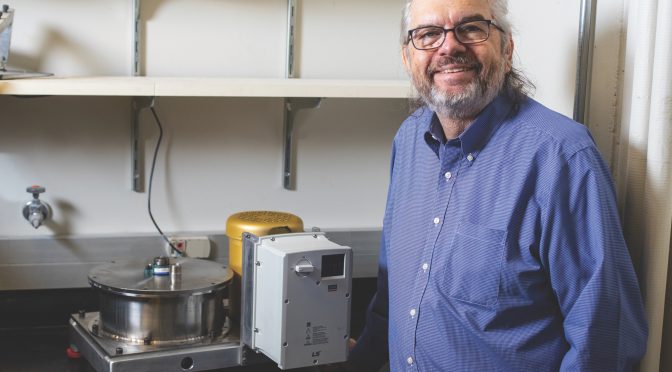For the past eight years, the Bill and Melinda Gates Foundation has been challenging scientists and researchers to solve a problem that impacts more than 880 million children worldwide: How do we treat human waste in remote parts of the world to prevent the spread of parasites and disease?
Gary, Foutch, Ph.D., joined the challenge in 2012 at Oklahoma State University, when he was awarded his first grant as part of the Bill and Melinda Gate’s Foundation “Reinvent the Toilet” project. In 2014, Foutch relocated to the UMKC School of Computing and Engineering, where he was awarded a second round of funding to further his research and complete his prototype.
Today, nearing the end of the project, Foutch reflects on what he’s accomplished and what lies ahead.
Q: What spiked your interest in this challenge?
A: I printed off the original request for proposals and put it on my desk. Every day I came in and read it. After about two months, my idea crystallized. But, ultimately, it was the cause that drew me in. You know the pictures of nearly starving children with big bellies? Some of these kids will pick up handfuls of gravel and eat it, just to feel full. I wanted to contribute to solving a health problem on a global scale.
Q: Tell us more about the science. What issue are you working to remediate and how does your technology work?
A: The issue of infection comes when acaris roundworms are allowed to sit in pit latrine sanitation systems in remote communities. This waste is often not hauled away and appropriately destroyed, so people, especially children, are very susceptible to being infected again and again, even when health aid organizations offer treatment.
Our technology uses the same basic process used to make the plastics you come into contract with every day. Human waste passes through high temperature chambers and comes out the other side sanitized.
Q: Now that you are nearing the end of your research, what’s next?
A: We now have a single heater that can process 4,000-5,000 kilograms of waste per hour — four times the processing capacity we had only a year ago. Our prototype is ready for final testing, and I’ll be traveling to Africa with it this fall. My partner at the University of KwaZulu-Natal, Professor Chris Buckley, a world-renowned expert in sanitation, will be assisting me. We are also in discussions with a manufacturing company in India to produce the viscous heaters. By using a supplier close to the center of outbreaks of acaris roundworm, we could keep costs down and offer our solution to communities with very few resources.

